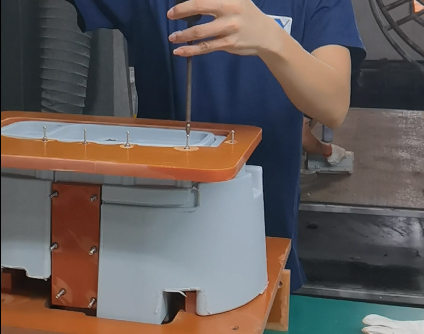How to Design the Threads for Rotomolded Products?
 Mar 19,2024
Mar 19,2024

How to Design the Threads for Rotomolded Products
Threads design on rotomolded products is a complex process that involves multiple aspects, including material, mold design, and manufacturing techniques. The design and production of threads require the consideration of many factors, including the product's requirements, the type and size of the threads, and the characteristics of the rotational molding process.

Firstly, the types of threads include pipe threads and machined threads, which can be added to rotomolded products in different ways, such as direct molding, machining, thread inserts, or welding. Threads formed by direct molding and machining are usually attached to holes, while thread inserts and welding methods offer more flexibility.
However, designing and incorporating threads on rotomolded products is not easy. It not only increases the difficulty of mold manufacturing but also complicates the rotational molding process and the demolding process. When designing threads, factors such as holes, ribs, closed parallel double walls, and convex and concave areas need to be considered. Threads need to be designed in a similar structure to solid ribs, which is a closed double-wall structure to ensure that there is enough space for the raw material powder to flow freely during rotational molding.
After rotational molding, the shape and size of the threads may change due to natural shrinkage. Therefore, the thread fit design should not be too tight. External threads are usually located on the protruding parts of the product. Sometimes, they can be designed on the parting line for direct demolding, but this may also lead to parting line misalignment or wear issues. Internal threads are recessed structures that require the use of rotating punching pins for molding and the punching pins need to be withdrawn along the threads before demolding.
There are also limitations on the types of threads that can be molded-in by rotational molding. Fine-pitched threads with sharp angles or pipe threads are difficult to be molded-in because the raw material powder cannot be fully filled. Trapezoidal threads or circular trapezoidal threads, with deeper threads and wider flutes, can provide better shear resistance and engagement, but there may be issues with incomplete raw material filling. The diameter of the threads generally should not be less than 4mm, and the precision should not exceed grade 3. To prevent the outermost threads from breaking or deforming, a step hole should be left at the beginning of the hole, and the end of the threads should not extend to the bottom. For threads that cannot be directly rotomolded, other methods such as inserts or tapping should be used.
With rich knowledge and extensive experience, Light Venus is custom rotational molding factory, we have successfully crafted a diverse array of plastic parts with molded-in threads to reduce a part's cost by eliminating secondary operations, click here to view our custom rotational molding project for the OEM/ODM manufacturers.
 Tel: 0086-13632687993
Tel: 0086-13632687993  Email: roto@lightvenus.com
Email: roto@lightvenus.com

 Home
Home The importance of Wall Thickness Uniformity in Rotational Molding
The importance of Wall Thickness Uniformity in Rotational Molding  You May Also Like
You May Also Like



 Tel
Tel
 Email
Email
 Address
Address








